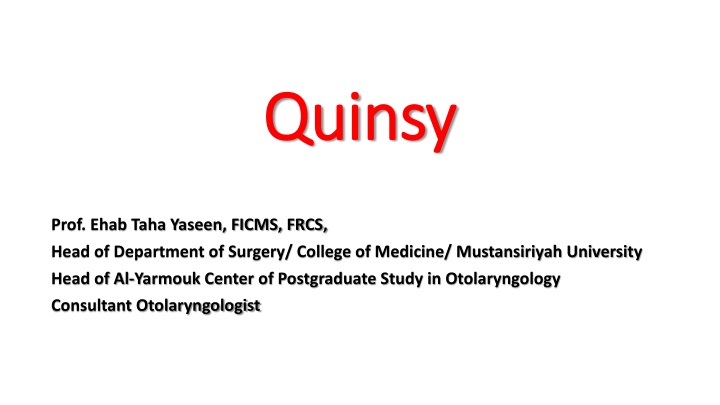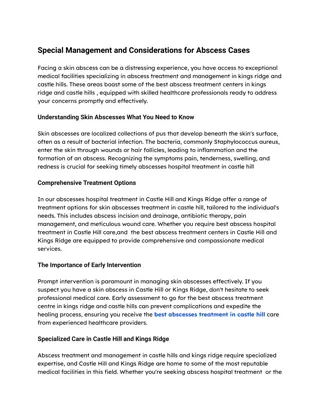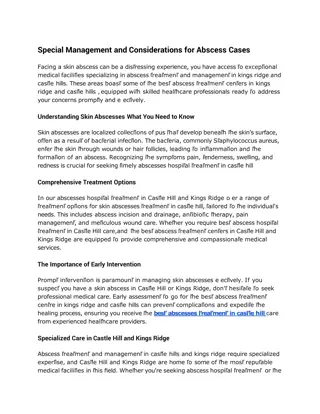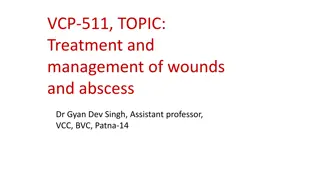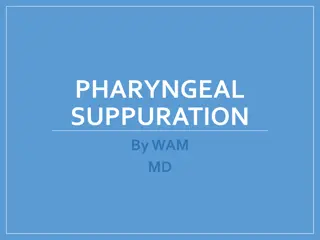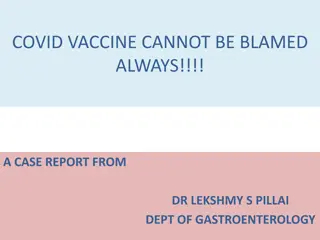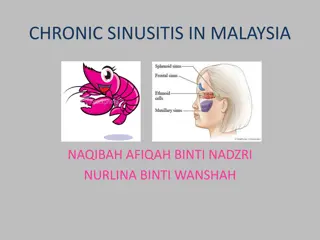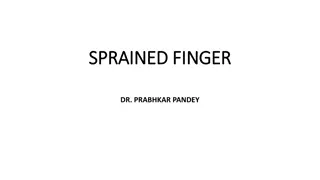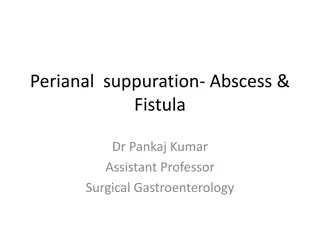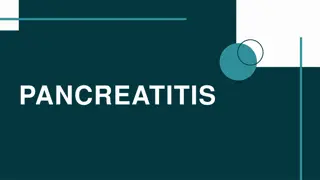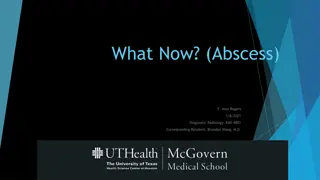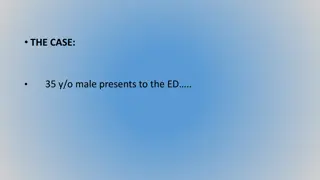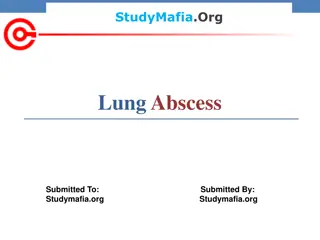Quinsy (Peritonsillar Abscess) - Causes, Symptoms, and Treatment
Quinsy, also known as peritonsillar abscess, is an abscess that develops between the tonsil capsule and the lateral pharyngeal wall, usually following an episode of tonsillitis. This condition presents with severe throat pain, fever, malaise, headache, trismus, earache, and other symptoms. Complications can include parapharyngeal abscess, hemorrhages, laryngeal edema, and septicemia. Treatment involves conservative management in the early stages, systemic antibiotics, pain relief, and drainage of the abscess if pus is present. Tonsillectomy may be necessary in some cases.
Download Presentation

Please find below an Image/Link to download the presentation.
The content on the website is provided AS IS for your information and personal use only. It may not be sold, licensed, or shared on other websites without obtaining consent from the author.If you encounter any issues during the download, it is possible that the publisher has removed the file from their server.
You are allowed to download the files provided on this website for personal or commercial use, subject to the condition that they are used lawfully. All files are the property of their respective owners.
The content on the website is provided AS IS for your information and personal use only. It may not be sold, licensed, or shared on other websites without obtaining consent from the author.
E N D
Presentation Transcript
Quinsy Quinsy Prof. Ehab Taha Yaseen, FICMS, FRCS, Head of Department of Surgery/ College of Medicine/ Mustansiriyah University Head of Al-Yarmouk Center of Postgraduate Study in Otolaryngology Consultant Otolaryngologist
Quinsy ( Quinsy (Peritonsillar Peritonsillar abscess) abscess) Is an abscess between the tonsil capsule and the adjacent lateral pharyngeal wall (superior constrictor muscle). Follow an attack of tonsillitis.
Clinical Features Clinical Features Severe pain in the throat Fever and malaise Headache Rigor Trismus Earache Intense salivation and dribbling Thick speech Foeter oris Cervical lymph nodes are enlarged and tender. There is marked hyperemia and edema of the tonsillar and palatal regions. The uvula is edematous and pushed to the other side
Complications Parapharyngeal abscess Haemorrhages Laryngeal edema Septicemia
Treatment Conservative in the early stage of cellulites (negative tap) ( i.v. Systemic antibiotics, analgesia, bed rest and fluid intake Drainage of the abscess (when the tap yields pus) and tonsillectomy may be indicated after1 month
